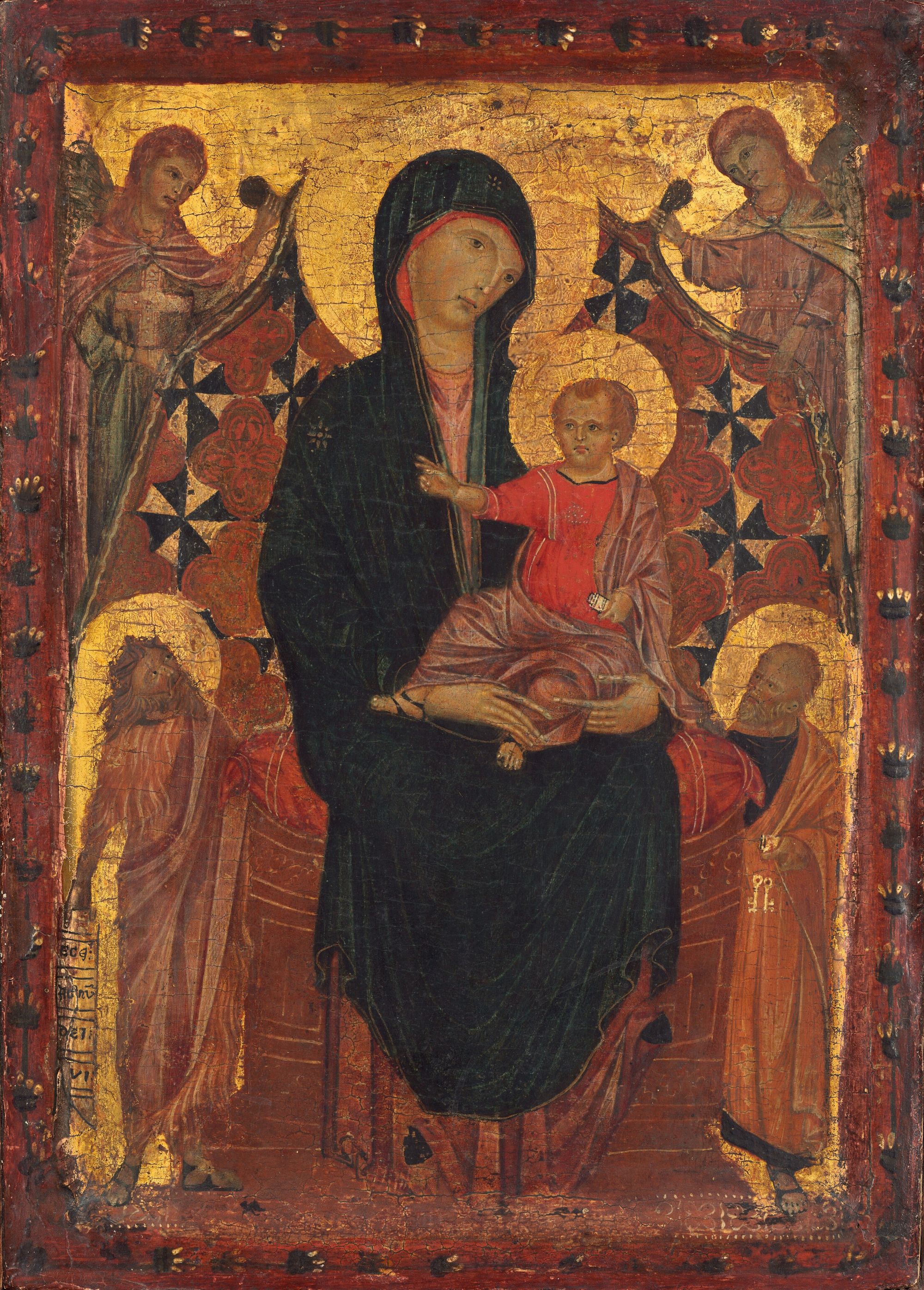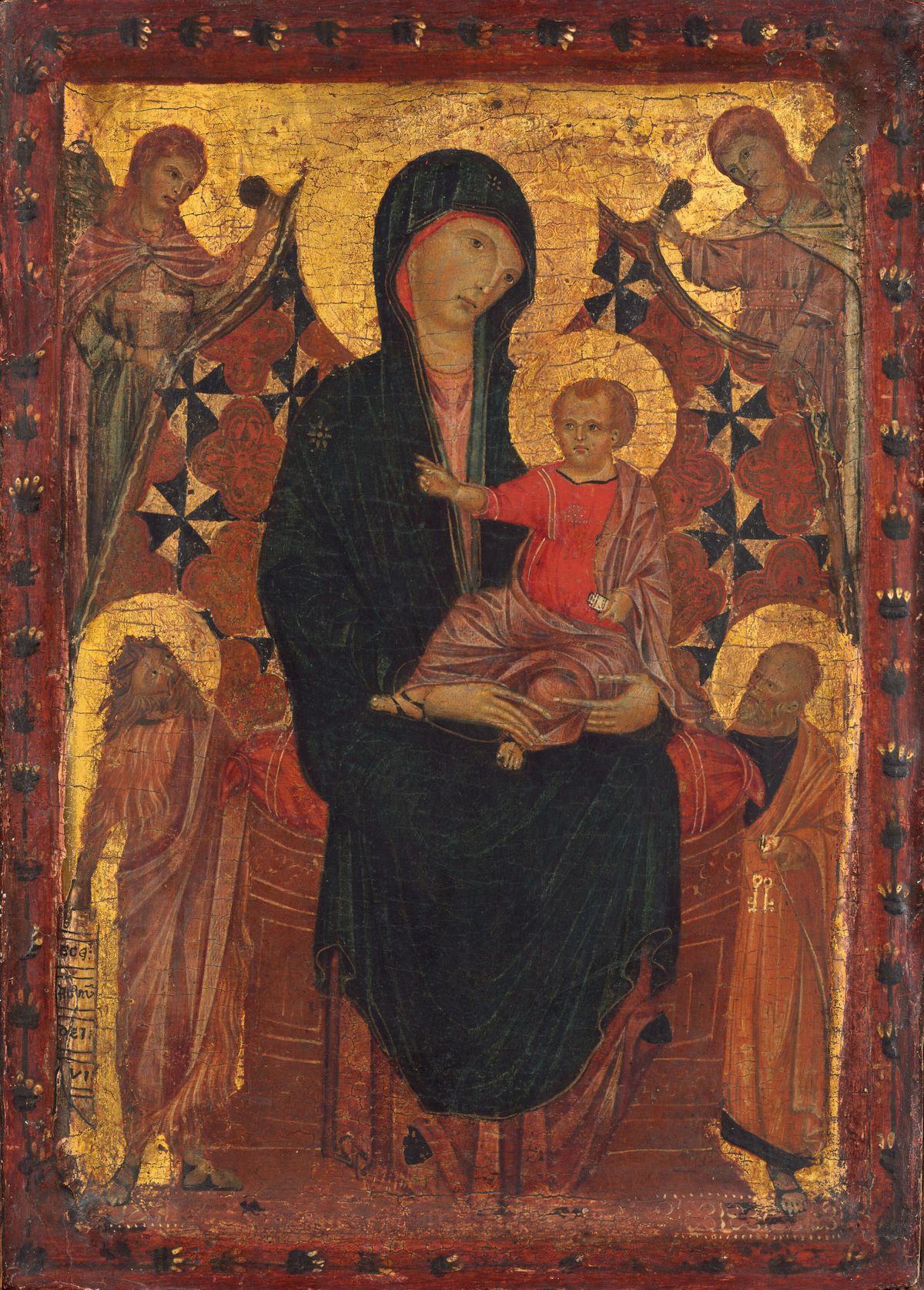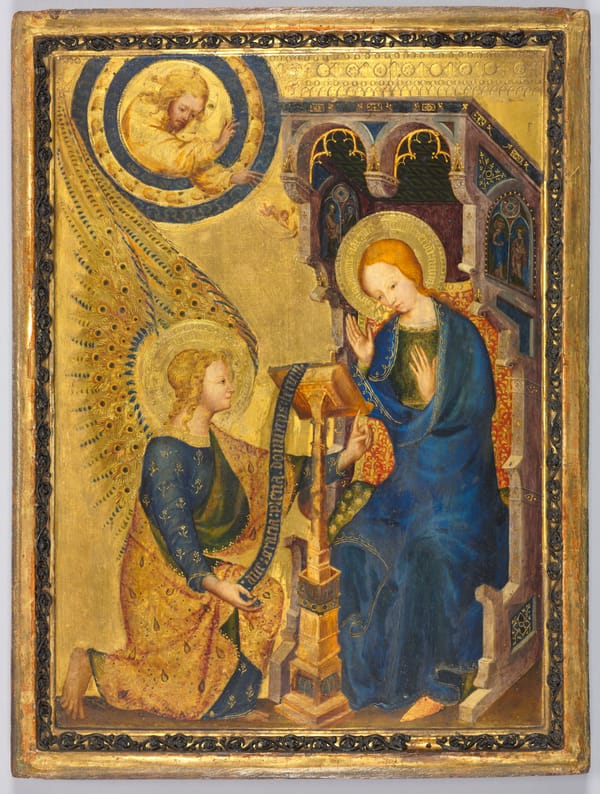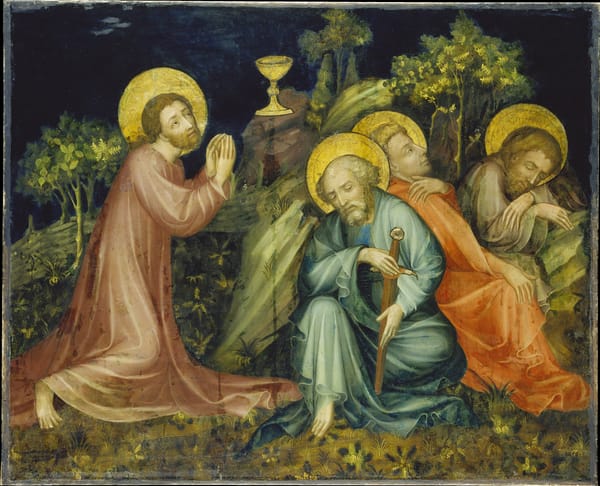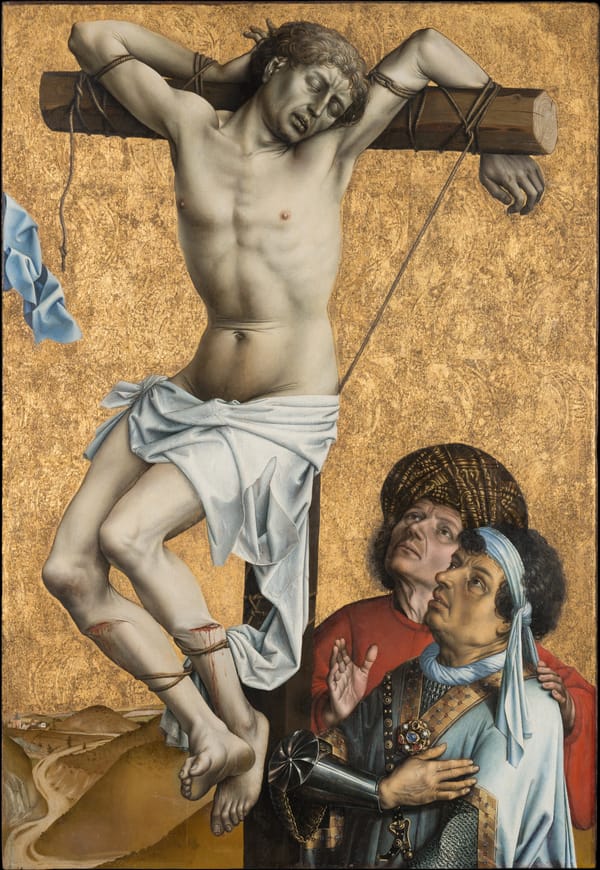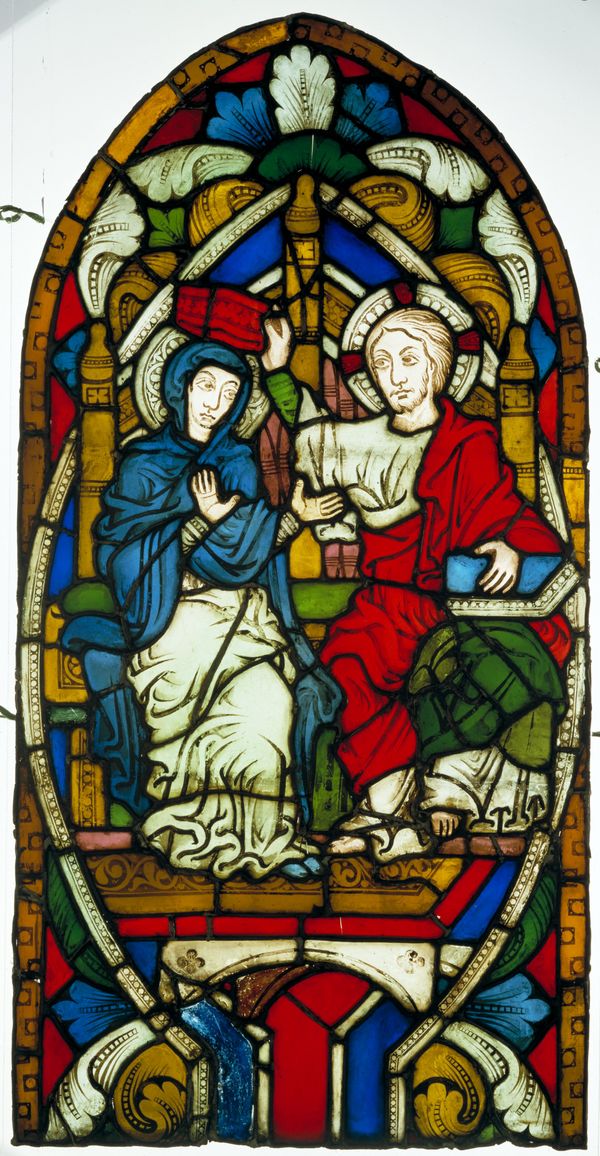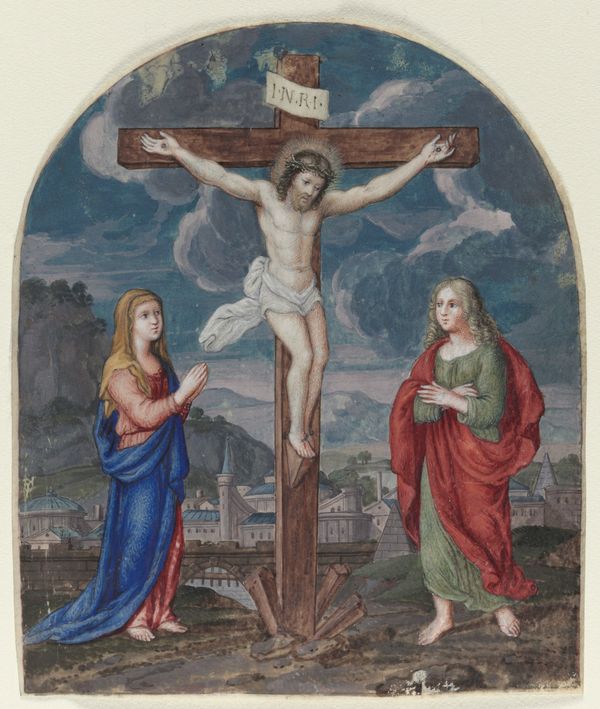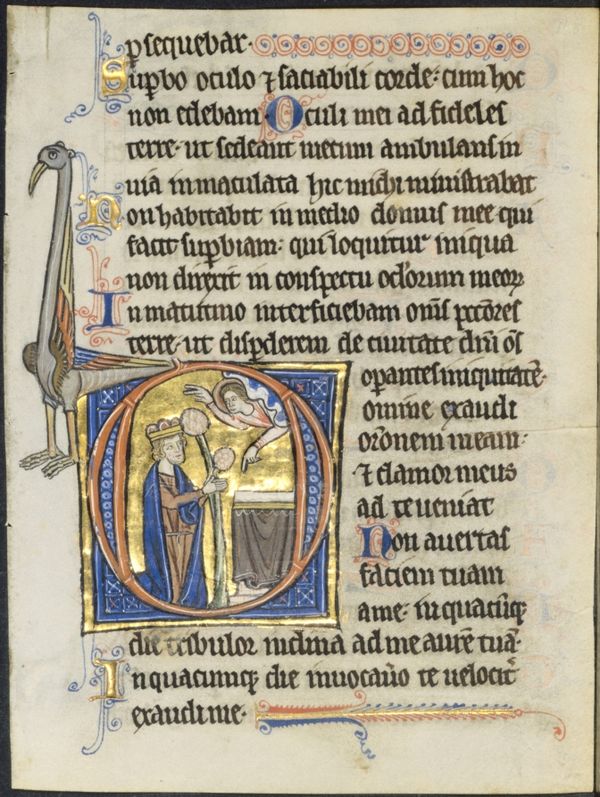This small painting is less than 10 inches across, and it was surely made for the private devotions of the person who owned it. That the owner was of modest means is suggested not only by the painting’s size but also by the limited use of gilding. The area of the gold background is relatively small, and the frame, which is carved from the panel, is not gilded at all. Instead, it is painted red and bears a simple decoration of daisies linked in a chain. Daisies were sometimes symbolic of the blessed souls in heaven or of Christ’s Incarnation.
The painting’s execution is quick, even cursory. The artist, whose identity remains unknown, has used a shorthand technique for rendering the mouths of the Virgin and the blessing Christ, as well as the subsidiary figures, using only dark lines at the corners. The folds of Jesus’s robe have an almost metallic angularity. Nevertheless, the Virgin’s eyes convey wistfulness as she considers the future of her son, whom she presents to the spectator; and the wildness of John the Baptist, on the left, is lively and direct. The artist probably trained in the orbit of Cimabue, who softened the abstraction and stylization inherited from Byzantine art.
The composition is a variant of the type of the Hodegetria Virgin, a type that originated in Byzantium and is found in many of the Gallery's Madonnas of this period (the Byzantine Enthroned Madonna and Child and Lippo Memmi’s Madonna and Child with Donor are just two). The Virgin, “She Who Points the Way,” does not point towards her Son as “the Way,” as in the Byzantine prototype. In presenting him to the viewer instead, her affectionate maternal role has priority over her more impersonal function within the Church.
Free Downloads Below
Hi-Res
1200px
800px
